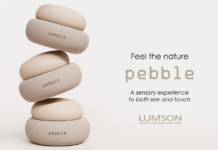
Let’s start with a provocative question: in a sector with a huge range of product shapes and sizes and production campaigns that typically last 6 months to a maximum of 1 year, why should a cosmetic company invest in automation or the purchase of collaborative robots?
Zetapunto, an Italian company specializing in robotics and industrial automation, provides us with an interesting overview of the opportunities offered by new technologies and Industry 4.0.
THE GROWING SUCCESS OF ROBOTS AND AUTOMATION
The widespread adoption of automated solutions is made evident by the data. According to the International Federation of Robotics (IFR) and the Italian Association of Robotics and Automation (SIRI), Italy ranks 6th in the world for the use of robots in the industrial sector and 2nd in Europe after Germany.
The driving sector for robotics remains automotive, but in the last 5 years, there has been significant growth in other productive sectors as well, as happened with cobots or collaborative robots. These robots, thanks to adjustments related to movement speeds and control systems, can work alongside operators and even collaborate with them in some situations. The use of cobots worldwide continues to grow at a double-digit rate (+31%), despite the total volume remaining much lower than traditional robots (the ratio is 1 cobot for every 10 traditional robots).
Even in China, after the pandemic, the volume of robots that have been installed has exponentially increased (from 178k in 2020 to 290k units in 2022), resulting in the country having more operational robots than the rest of the world.
All of this is driven by cost reduction and increased flexibility in usage. Additionally, we can’t forget the impact of incentives given to companies such as the ‘National Industry 4.0 Plan’ which have allowed for tax breaks following the purchase of robots and automated machines.
The success of these solutions is also owed to the fact that employing robots to work side-by-side with operators in the industry is fundamental for increasing productivity and maintaining competitiveness. If even China, with no shortage of manpower due to its population, adopts industrial policies that call for an increased use of robots, the same becomes necessary in Italy where the difficulty in finding skilled labor is becoming an increasingly pressing issue for SMEs.

TYPES OF ROBOTS AND AREAS OF APPLICATION
The choice of which robot to use for each application requires careful analysis, based not only on the costs of the robot itself but also on the potential costs for servicing, building its framework, and operator safety.
Cartesian robots: with two or three motorized axes (X-Y-Z), usually with very high strokes, medium speeds, and an ample payload range, they are useful for very bulky applications but require a lot of space to operate.
Delta robots: with three axes and their characteristic ‘spider-like’ shape, these robots are extremely fast but have very low payloads, they usually never exceed 5 kg.
Scara robots: four-axis robots that are the least bulky with the best precision, especially for very light loads. Their speeds are catching up to delta robots.
Anthropomorphic robots: 6-axis manipulators that allow a much wider range of movements and can handle very high loads (100 kg), requiring a large space and complex protection requirements.
Cobots: usually anthropomorphic, as already mentioned, they significantly reduce the need for protection systems for operators and hence implementation costs, but at the expense of speed and movable loads.
WHY INVEST IN AUTOMATION AND ROBOTS
“Taking a hypothetical example in the sector of interest, namely cosmetics, we can broadly outline two main categories, based also on our experience over the years,” explains Engineer Zechini, CEO & founder of Zetapunto. “We can use small-sized scara robots (400 mm or 600 mm reach) for all applications requiring both speed and precision. For example, loading/unloading filling lines for bottles or tubes, serving cartoners or flowpack machines, or filling palettes with tin pans. Anthropomorphic and collaborative robots can be used for more complex manipulations requiring skills and precision comparable to a human operator, such as gluing on complex edges, product handling and reorientation, opening cosmetic palettes, and end-of-line palletization. If we associate the choice of the robot with the use of other automations, such as cameras to check product quality, we can further enhance the quality and consistency of the operation’s end result, even guaranteeing precise control over 100% of the handled products and the possibility to carry out statistical analysis of the production process in less time.”
In our opinion, these are key advantages for a sector like Italian cosmetics, which boasts the highest quality control standards worldwide and is put to the test every day to meet the needs of end customers, but sometimes these are still not enough to justify the initial investments. In simpler terms, we could say that the aforementioned conditions are ‘necessary but not sufficient’ to support purchasing of these technologies.

And what if, as Zetapunto proposes, the customer could have circular solutions that can be modified according to needs, have a much longer life, and therefore allow the investment to remain profitable over time? The perspective of use would change significantly because the scope of action would broaden, and the timeline required to pay off the investment would change: the versatile solution has a much longer life.
A strategy adopted by Zetapunto, which provides a well-received service of revamping and retooling machines as production campaigns change; processes that have a much lower cost compared to the initial investment.
“At Zetapunto, we can do this thanks to the modular nature of our solutions and their streamlined design carried out entirely in-house,” explains Filippo Zechini. “This maximizes the return on investment for the customer without the need to shelve the robot after a short service time. In addition, the possibility of already having a robot available allows the customer to experiment with new uses for robotics within their own business, finding increasingly varied and innovative fields of application to gain a competitive advantage in the creation of products and services.”
In this case, it’s safe to say: a robot is (almost) forever!


















